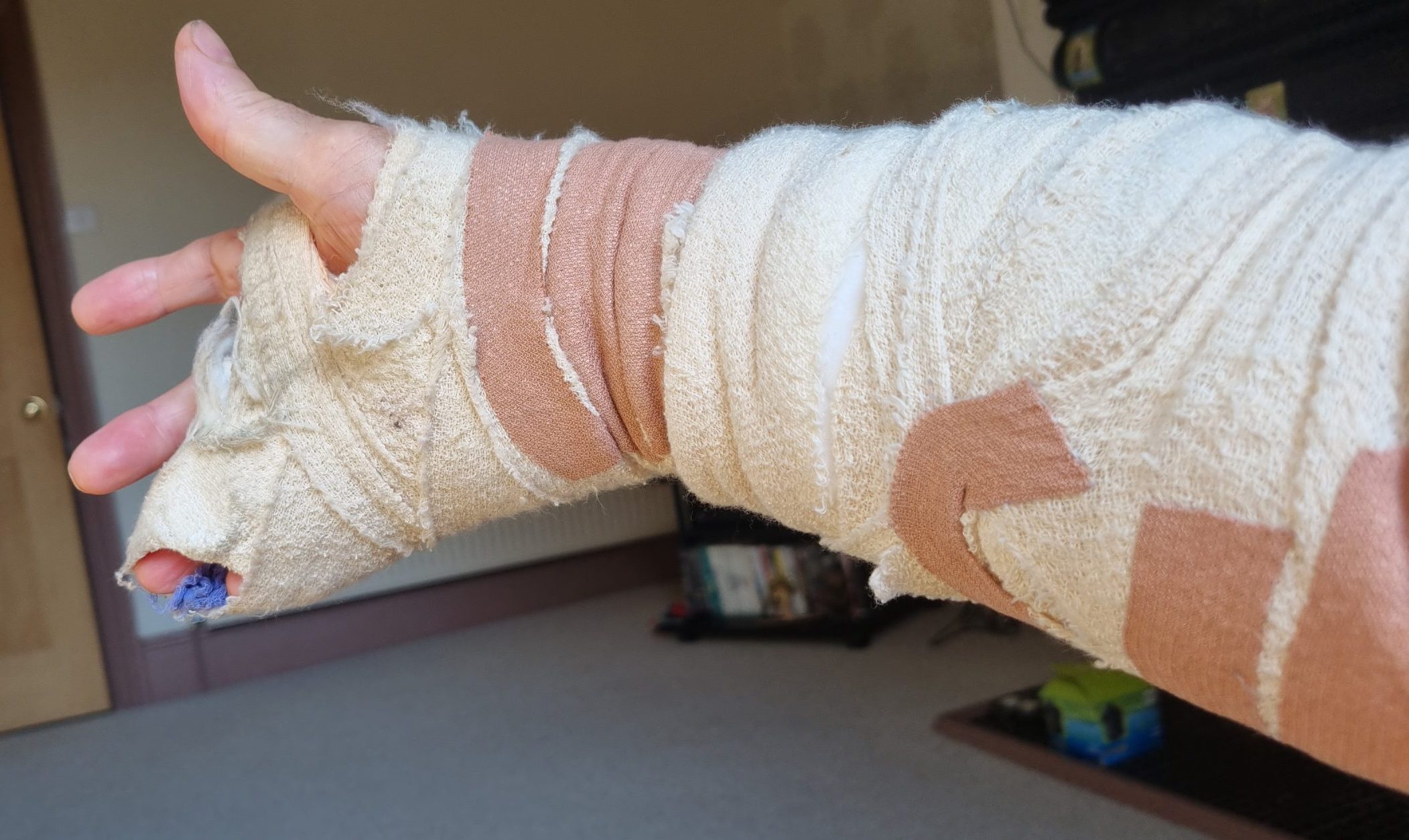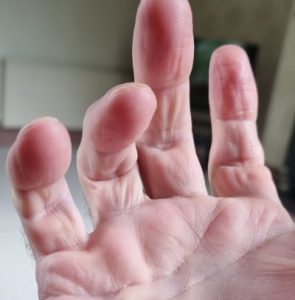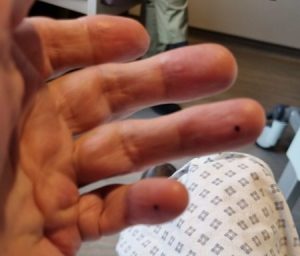I had my second surgery last week, dermo-fasciectomy of the ring and little finger of my right hand. I’d like to thank the surgical team and the follow up nursing and physiotherapy staff for providing exemplary care during both my operations to date. The one thing I have a slight grievance about is the bandaging pictured. Described by one acquitance as “a comedy bandage”, I have to say that whoever did it probably needs to revisit bandaging classes.
However, the process got me thinking about what we are asked to wear for surgery and why? I was given a pair of paper pants, compression socks and a gown that fastens at the back (leaving part of the back exposed). Considering each item in turn:-
Pants:
Hospitals normally provide disposable “paper” or “modesty” pants for patient comfort and discretion. Regular underwear is discouraged (if not forbidden) during surgery to ensure quick access for medical needs, prevent stains from bodily fluids and surgical prep, and to avoid interference with the insertion of medical devices like urinary catheters. I’m not sure how most modern underwear would actually be a problem for emergency access for catheters (e.g. heart attack during surgery) as the sort of bloomers my granny used to wear are a thing of the past. However I can see the point of containing unwanted bodily fluids so, probably not a bad idea.
Socks (stockings):
Surgical socks or stockings, also known as compression stockings, are special elasticated stockings that apply graduated pressure to your legs to improve blood circulation and reduce the risk of blood clots (Deep Vein Thrombosis or DVT) after surgery. They work by supporting leg veins and helping blood flow back up to the heart, which can also reduce swelling, aching, and the worsening of varicose veins. Generally they don’t have toes, which confused me as I didn’t know if my toes should poke out the end or not (apparently the answer is yes). So I end with big toes poking out but not the rest, despite the holes apparently being there to make it easier to put the socks on! Overall, a good idea but some instructions would be helpful if you are anything like me.
Gowns:
The design of gowns is what really puzzled me until discovering that the design was over a hundred years old and for the convenience of medical staff not the patient. A hundred years ago, day surgery (such as I had) did not exist and the need for easy access, particularly for bed pans, was necessary with patients generally being bed bound for days. Nowadays, emergency access would almost certainly be via the front, see urinary catheters above, for heart massage/shocking or respiratory failure. Monitoring during surgery requires electrodes on the front of the body not the back. So just what is the benefit of the backless gown?
In 2010 the shortcomings of gown design was recognised as UK government level and the Design Council was involved in coming up with new designs. Smart, practical alternatives were produced. A similar initiative in 2014 in the USA, also led to new gown designs being introduced. However, here we are in 2025 and progress on the gown front (pun intended) has stalled, certainly in the UK. To me this is not a surprise as the lumbering behemoth of the NHS is never quick to change and even when it does try to it is capable of screwing thing up monumentally. A great example is the waste of billions (no-one seems exactly sure how much but definitely well over £10 bn) on failed computer systems whilst planning to go paperless. The target for going paperless was initially 2018, then 2020, then 2024 and now…..? Who knows, its still an ambition rather than a reality with the NHS paying over £1 billion a tear to store paper files!
I’m guilty of straying off topic here but I think the approach to gowns is symptomatic of the problems within our health service. There is a lot of talk about patient centred care but the reality is often very different, even in the little things. But often it is the little thing that make the difference. The inability to change rather than accepting a “but we’ve always done it that way” approach can be somewhat infuriating. So come on NHS, you can do better than that..




